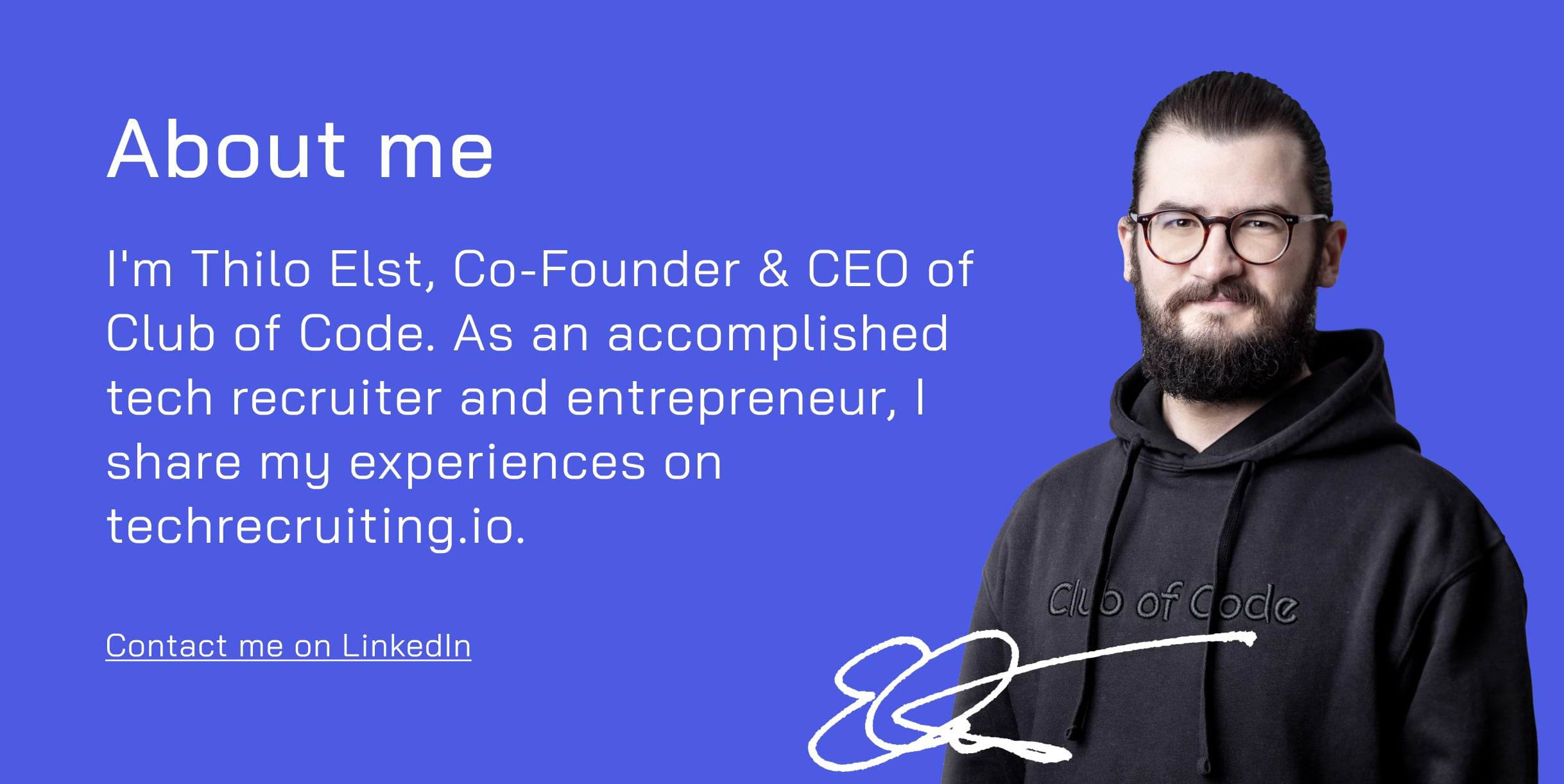What is Active Sourcing?
Active sourcing is the identification and proactive approach of promising talent to fill advertised positions. In contrast to advertisements on job boards and other passive recruiting channels, where applicants approach the company, in active sourcing the company itself actively approaches potential applicants. The job description of the active sourcer has emerged, who takes on this task for the company and actively contacts potential talents.
Why do active sourcing?
There are various reasons why it can make sense for companies to use active sourcing as a recruiting channel. Especially for hard-to-fill positions with special requirements, active sourcing is the tool of choice. But also to increase the number and "quality" of applications. In fact, Active Sourcing makes available a pool of talent that does not apply itself - the latent seekers. Latent seekers are not actively looking for a new job, but are open to a new challenge. The motivation for this is varied. Some can well imagine a job change because their current position does not completely fulfill them, others are interested in testing their market value or use a change as a career jump. The group of latent seekers corresponds to about 60-70% of the employed population, thus enlarging your pool of potential talent enormously.
Why should you consider active sourcing as a recruiting channel? What are the advantages of this channel?
Advantages of Active Sourcing
In addition to the expanded pool of latent seekers, with active sourcing you have a direct influence on your recruiting results. Since you don't leave it to chance whether someone applies to you, but actively approach suitable talent, your success is determined by your activities. You are in control of how much you do, what you do and how you do it.
In active sourcing, you also meet candidates in direct contact at eye level. While candidates in passive channels are mainly confronted with the company as a counterpart, you are the face in active sourcing. The candidate is addressed by a real person with name and picture. It is a contact between two people. This has a different effect than the anonymity between company and candidate. However, this also entails a responsibility on your side, as you shape the first impression towards the potential candidate. This applies both to you as a person and to the company as a whole. At this moment, you represent the brand of your client.
Through the direct contact between you and the candidate, there is usually a faster and more flexible process. After a positive response from your counterpart, you usually make a direct telephone appointment to talk about the advertised position without obligation. This is not so much a classic job interview, where the applicant answers questions, but rather a chance to get to know each other. It is more up to you to present the position to the candidate.
Through the speed and direct personal contact, you can leave a positive impression on the candidate and recognize early on whether you harmonize.
In active sourcing, the company applies to the talent. This brings with it a certain appreciation of the person, which can have a positive effect on the hiring process and subsequent collaboration. The candidate feels seen and his or her abilities recognized.
And even if no final match is found for the advertised position, you will usually remain networked. In this way, you build up a network of relevant contacts for your company and yourself. You can always fall back on this network and regularly remind people about you and your company, e.g. through posts in social media.
Where there are advantages, there are always disadvantages. What speaks against active sourcing as a recruiting channel?
Disadvantages of Active Sourcing
Active sourcing is expensive. On the one hand, because it requires know-how, which you may have to acquire first. And secondly, because it is extremely time-consuming, despite the know-how. It will take many hours to identify suitable talents, review them with the department if necessary, contact the talents, follow them up, coordinate appointments and carry them out. At the same time, you may need tools to access potential talent. All of this costs time and money. It is therefore not uncommon to already employ active sourcers, as a separate professional group, or to rely on freelance active sourcers to handle this channel.
Active sourcing is also a balancing act between quality and quantity of profiles. In active sourcing, we would naturally like to have both. Lots of talent with lots of quality. In practice, however, this proves to be rather difficult. For specific positions, this may be due to the fact that the labor market simply doesn't allow it. But it can also be due to the fact that the data in the profiles is not sufficient to recognize suitable talents or to be able to evaluate them correctly as an outsider. This increases the time required to find interested talents.
Another point is again the first impression. This can also be negative, for example, due to a generic, boring address. This can also make you and your company look bad to promising talents. Rebuilding this reputation in detail, as the talent would be a perfect fit, is difficult to impossible.
How do you do active sourcing?
The advantages outweigh the disadvantages and you want to start with Active Sourcing? Then let's clarify in the first step how we can identify potential talents with active sourcing tools.
Active Sourcing Tools
Active sourcing takes place wherever we can assess whether a person we don't know fits our job. That means we need data. We need to know, depending on the requirements of the applicant, what they do and how good they are at it. Now, if you're out at a party with friends in the evening and ask your friend if there's a software developer here, she answers in the affirmative and mentions that the guy at the bar is a software developer, of course you can approach him. You've identified someone who could potentially fit your software developer position. But the data is pretty thin. Just because he's a software developer doesn't mean you know exactly what he does, what tech stack he likes to work with, or how much work experience he has. The likelihood that you will fill your position through this one encounter is very low. In principle, though, you've done active sourcing.
To increase the quantity and quality, we do active sourcing primarily online. Platforms such as LinkedIn, XING, GitHub, Facebook, Twitter and others provide us with access to profiles. The data situation here varies in its relevance to our project. While job-specific data is requested from professional networks such as LinkedIn and XING, Facebook, Twitter and the like are more private in nature. LinkedIn and XING are therefore preferred for active sourcing. Depending on the occupational group, LinkedIn may be more suitable than XING and vice versa. For each of the aforementioned platforms, however, it is true that filling out the profile depends on the user. He decides whether he wants to be found with a well-filled profile or does without and remains untraceable. Few completed profiles are therefore not a sign of poor quality. Behind it can also be the perfectly matching talents.
In addition to social media, however, there are other databases in which we can conduct active sourcing. For example, the candidate pool of the employment office or that of various job boards to niche platforms with their own active sourcing access. It always depends somewhat on which jobs we are sourcing for. Depending on the situation, one pool lends itself more than the other. Searching for a software developer in the candidate pool of the employment office, for example, would not be very productive from my point of view.

How do I identify potential talent in active sourcing?
LinkedIn and XING offer their own recruiting tools that can be used to search the platforms. These are LinkedIn Recruiter and LinkedIn Recruiter-Lite on the one hand, and XING Talent Manager on the other. They offer extended access to the user base with an additional search mask. Here, we work with Boolean operators in Active Sourcing. I will explain exactly how these work in a separate article. In short, we create a search string with AND and OR functions that combine our requirements to find the right talent.
Essentially, search strings cover a keyword combination of activity, language skills, and location. So, for example, if we have a Frontend-If you are looking for a developer in Stuttgart who should be able to speak German, our keywords would be: JavaScript, Vue, German, Stuttgart, plus other tech terms like frontend, other libraries or frameworks.
How do I write to potential talent?
The cover letter is the holy grail in active sourcing because you only have one chance. One chance to make a first impression. One chance to stand out. One chance to get a yes or a no. Always put yourself in the other person's shoes. Especially in the IT profession, talented people get a lot of inquiries. It would be counterproductive to use the same generic approach as everyone else. Therefore, avoid interchangeable and too long texts that no one has the time to read through. Keep it short and to the point. It's all about an opener in the end, to get into a real conversation. In this you can then include your pitch, why your company is the best and why the talent should definitely come to you. But for the approach, an individualized text that responds to the profile and arouses curiosity is enough. Recruiting is like dating. You don't go up to someone, text them about how great you are, and then expect them to agree to a date before they've had a chance to say anything. It's about an honest request at eye level. We don't want to overpower, spam or annoy anyone. You have something to offer, you think the person might be a good fit, and you'd like to talk about it. That fits into a 300-character request on LinkedIn.
You can also convey a number of things via the text. For example, whether you use first or last names, whether you write formally or casually, whether you even use smileys. All this communicates and gives an impression of you as a person and also of your corporate culture.
Active sourcing is about quantity. You will get positive feedback. You will get negative feedback. You're also going to get just no feedback. That's just normal. Don't take it personally. We never know the actual situation of our counterpart. And even if you get a very negative feedback, you will surely get one that is very grateful that you wrote to her. So just stay tuned.
Active Sourcing Tips & Tricks
Finally, I would like to give you three tips along the way.
Tip 1: Less is more
When building Boolean operators, one is quickly inclined to include all available requirements. However, the more keywords you include, the smaller the pool becomes. This can also be suitable for a first search. From my experience you can describe most profiles with three central keywords. This makes the pool much larger, since profiles that are not so well filled out are also taken into account, for example. With this approach you definitely have to look at more profiles and read them actively. But it is worth it. The details make the difference and a broader search helps.
Tip 2: Do not filter by job title
Let's say you are looking for a software developer. You enter "software developer" as a job title and get few results in combination with your other search string. However, your target group may have the titles Engineer, Developer, Developer, Specialist, Consultant and many more in their current job. The developer you are looking for can be behind all these titles. Job titles are not universal and vary from company to company. Therefore, they should not be the central criterion for your search string. If you find out the central keywords, you will automatically be shown the right people. And the ones that don't fit, you can mentally put aside.
Tip 3: Use Google as a sourcing channel
Google is a powerful tool if you really understand how it works. Through indexing, you can read almost any page on the Internet. So can LinkedIn and XING. So you can use a free sourcing tool to expand your pool or save yourself the cost of recruiting tools. Of course, you have to know the playing field here. I'll explain how that works in another article.

FAQ
Definition: What is Active Sourcing?
Active sourcing is the identification and proactive approach of promising talent to fill advertised positions.
How do I write properly in active sourcing?
The cover letter in active sourcing is the first contact with the potential candidate. It should refer individually to the profile and aim for a personal interview. Avoid lengthy texts and long signatures.
What tools are available in active sourcing?
There are various tools and methods in active sourcing. The advanced functions of LinkedIn and XING, but also various other databases, are particularly suitable for searching for candidates.
